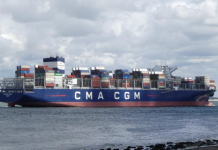
The Northwest Seaport Alliance (NWSA), a marine freight cooperation between the ports of Seattle and Tacoma, has announced the launch of the Puget Sound Zero-Emissions Truck Collaborative.
NWSA said it relies on a network of approximately 4,500 heavy-duty trucks that provide cargo-hauling services in and out of Seattle and Tacoma terminals with the majority of these service providers being independent owner-operators or small-scale trucking companies.
Nearly all drayage trucks are diesel-powered vehicles that emit pollutants into nearby port areas and contribute to climate change.
In 2021, the Northwest Ports Clean Air Strategy was unanimously accepted by the NWSA’s Managing Members – the commissioners of the ports of Seattle and Tacoma – with the objective of eliminating emissions from all seaport activities by 2050 or sooner.
The main mission of the Collaborative is to create a Decarbonizing Drayage Roadmap by the end of 2024 that outlines strategies for capitalising on new opportunities (such as increases in state and federal funding) and addressing key challenges (such as the high relative costs of zero-emission trucks and the current lack of charging and fueling infrastructure).
The work will be supported by the most recent data and research, as well as ongoing consultation with drayage truckers, near-port communities, and other relevant stakeholders.
In addition, NWSA recruited a consulting company to serve as a neutral, third-party coordinator for the Collaborative with funds from the Washington Department of Transportation.





